5 Tips from a Professional Cave Photographer
It’s easy to see why so many people dream of photographing Reed Flute Cave in Guilin, China. There’s an old legend about a scholar who once tried to write a poem about the ancient limestone cave, but he was simply unable to capture its beauty in words. As the story goes, he spent so long thinking of what he’d write that eventually, he turned to stone, becoming just another part of the limestone walls. These days, the cave is illuminated by brightly colored lights, which dance across the stalagmites, stalactites, and an underground lake.
In addition to being one of the most photogenic places on the face of the earth, however, Reed Flute Cave is also one of the most difficult to photograph. Visitors are permitted to take pictures, but since camera flashes and tripods aren’t generally allowed, most images will end up being underexposed. The lights only turn on when a lot of people are passing through, so in order to get the bright colors, you’d also have to run the risk of having random people crowding your frame.
That’s where photographer and Shuterstock Contributor Gregory Michiels comes in. He’s a professional photography guide, which means he can control the lighting himself. “I have a card to turn the light on and off as we want,” he tells us. Also, he lives nearby in Xingping village, so he can visit on a regular basis without having to travel far.
The cave is full of both natural history and human history: ink inscriptions on the walls date all the way back to the Tang Dynasty (792 AD). It’s believed that Reed Flute Cave then sat unnoticed and untraveled for a thousand years, until refugees fleeing Japanese troops used it as a hiding place during the Second World War.
Michiels has spent more time than most in Reed Flute Cave, and he knows the terrain. Newcomers, he warns, should be wary of slippery surfaces and low-hanging rock formations. The photographer’s personal favorite spot is the Crystal Palace, where the calm and quiet lake reflects the rock formations like a mirror. Upon arrival in the Crystal Palace, visitors are welcomed by a chorus of nature sounds to accompany the light show.
You can learn more about Gregory Michiels by visiting his website, where he offers tour of some of China’s most beautiful places, including Reed Flute Cave. We asked the artist to share some of his best images and tips for photographing caves.
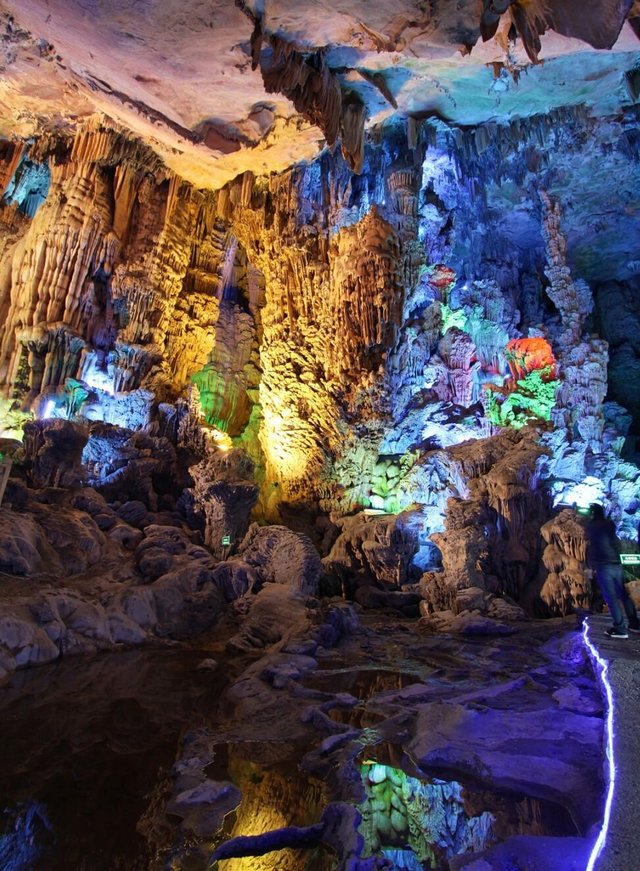
Tip 1
Always use a tripod when taking pictures in a cave.
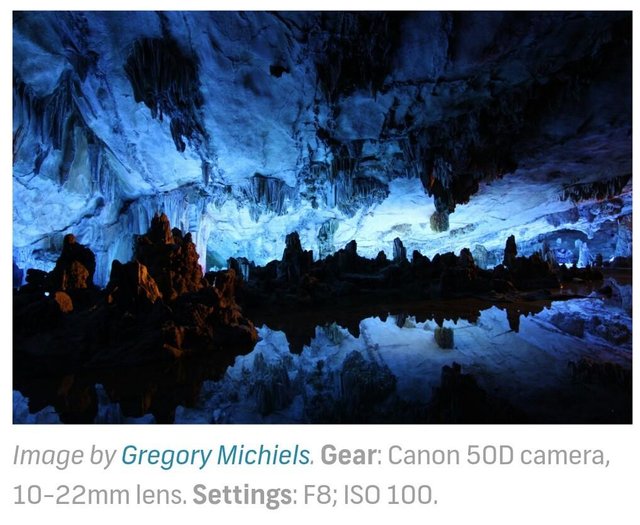
Tip 2
Use live-view manual focus.
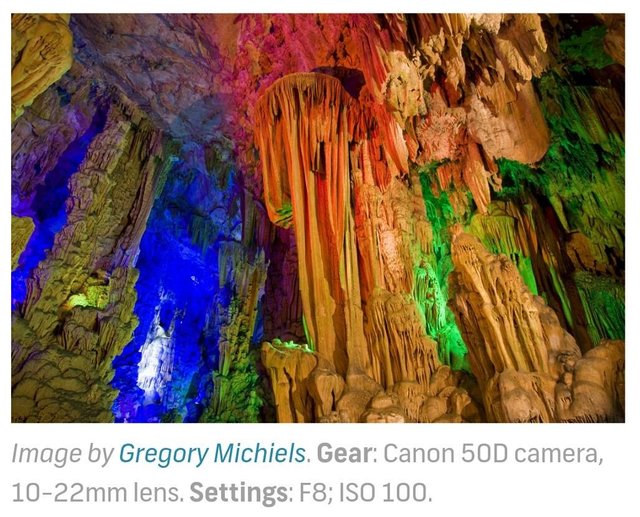
Tip 3
Use a small aperture and long exposures. Most of these images have an exposure time of two to fifteen seconds.
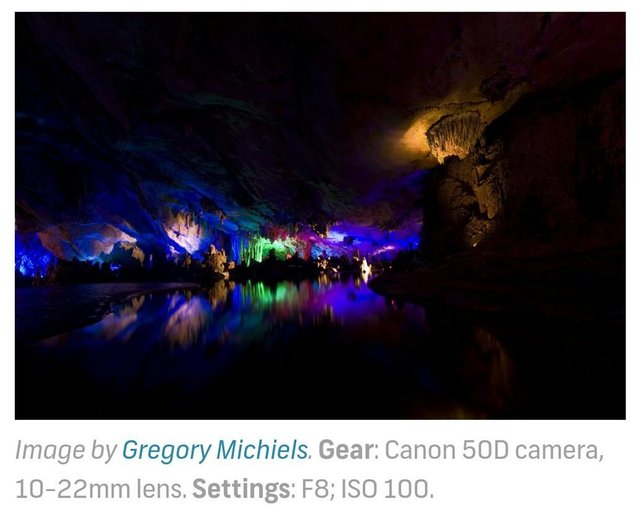
Tip 4
Hire a guide. Guides will give you extra opportunities when visiting a cave.
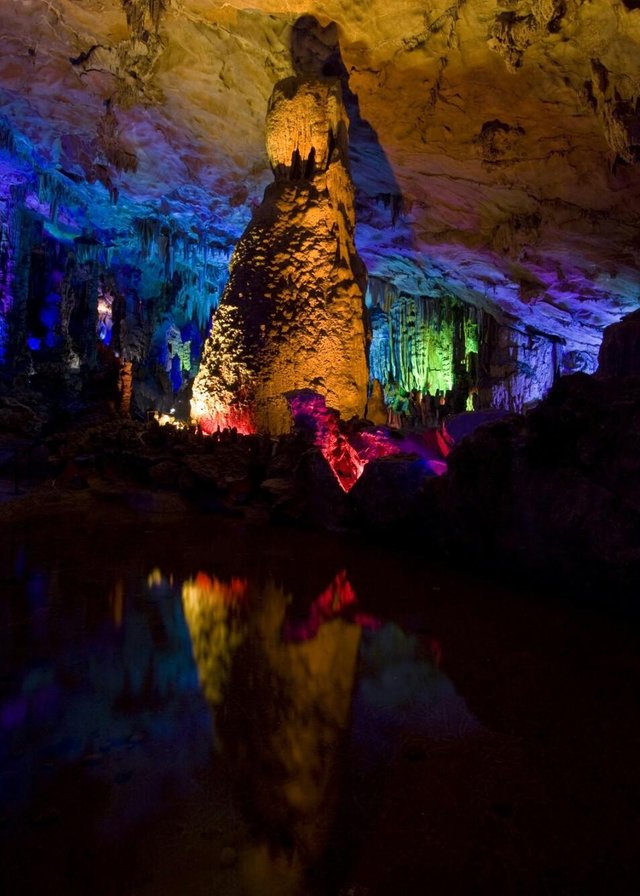
Tip 5
Bring an umbrella and a lens cover.
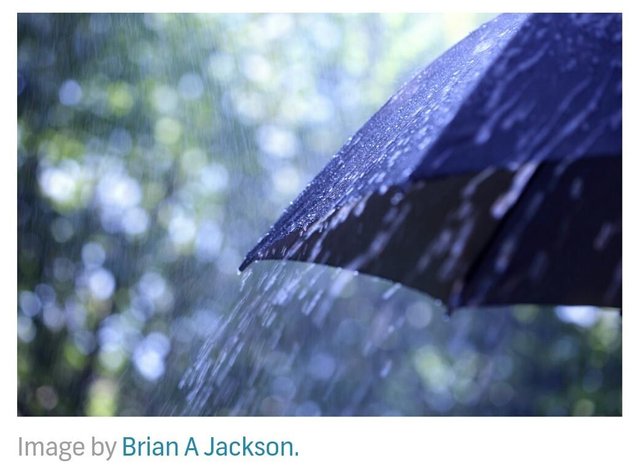
Source: https://www.shutterstock.com/blog/cave-photgraphy-tips+
Not indicating that the content you copy/paste is not your original work could be seen as plagiarism.
Some tips to share content and add value:
Repeated plagiarized posts are considered spam. Spam is discouraged by the community, and may result in action from the cheetah bot.
Creative Commons: If you are posting content under a Creative Commons license, please attribute and link according to the specific license. If you are posting content under CC0 or Public Domain please consider noting that at the end of your post.
If you are actually the original author, please do reply to let us know!
Thank You!